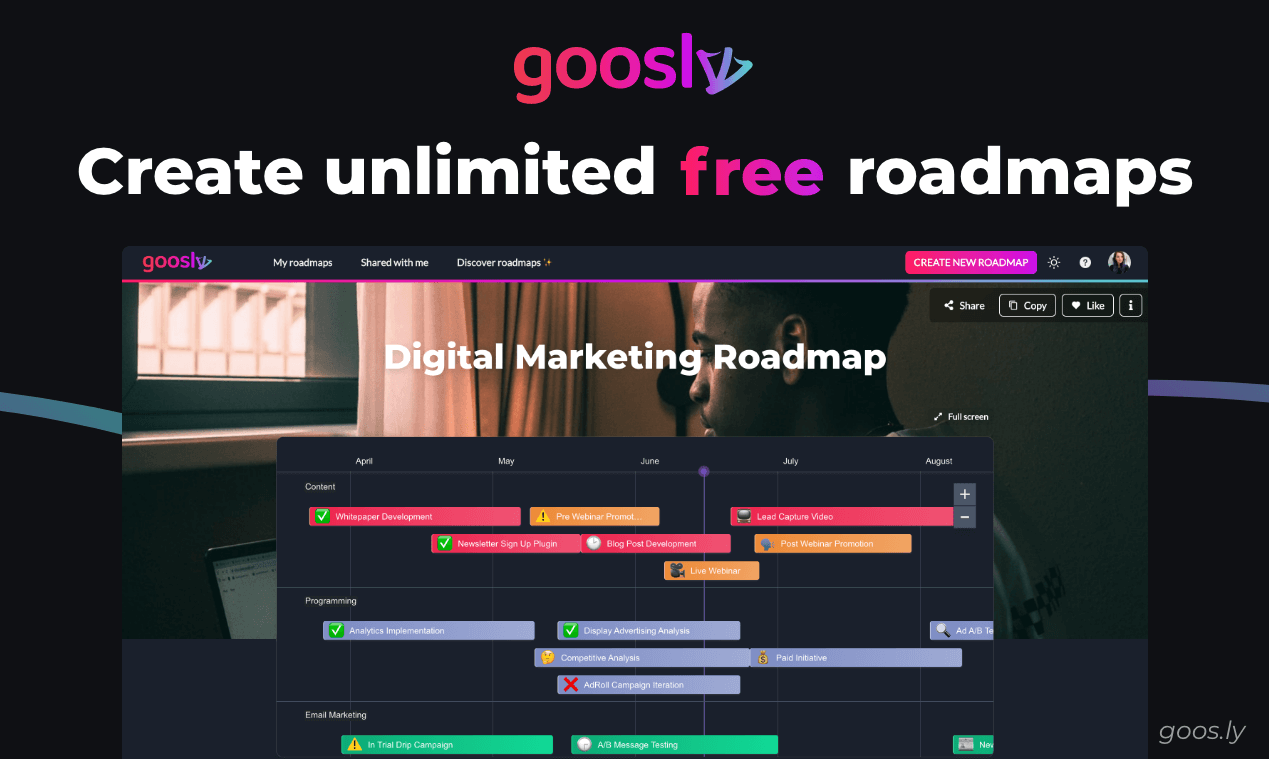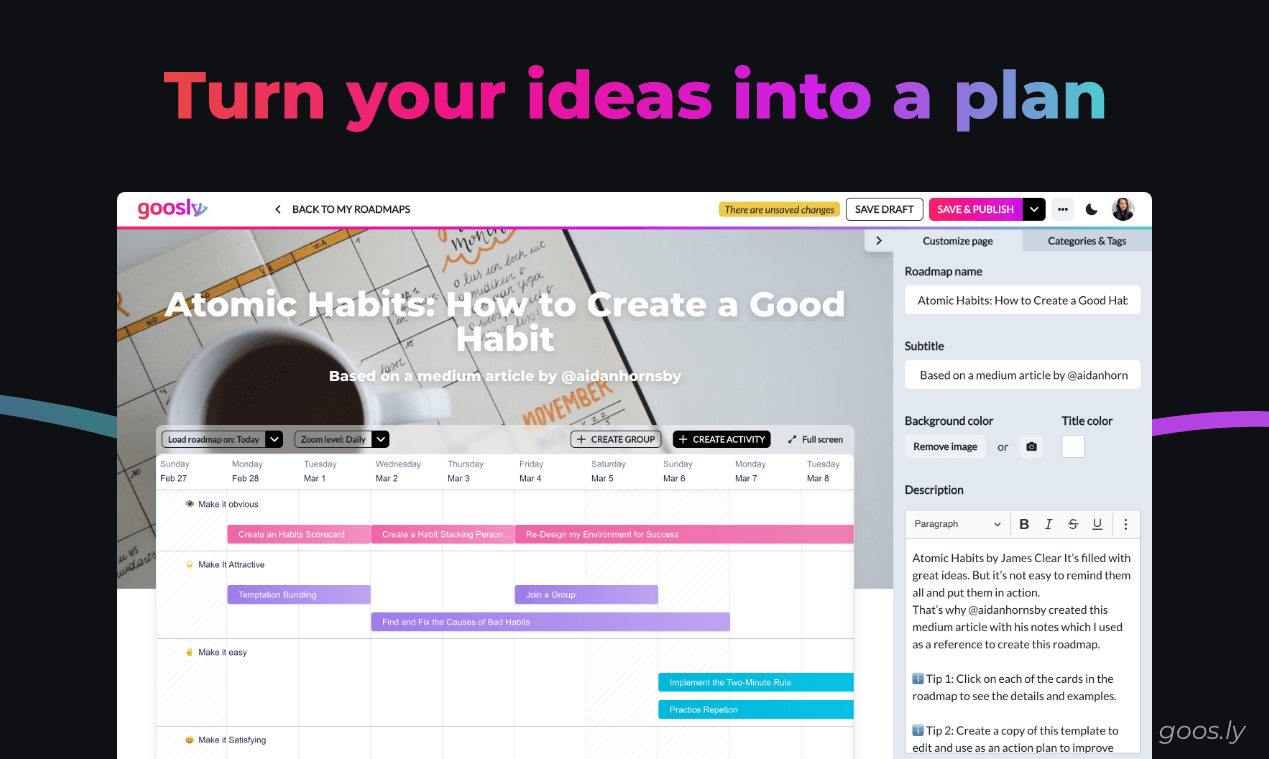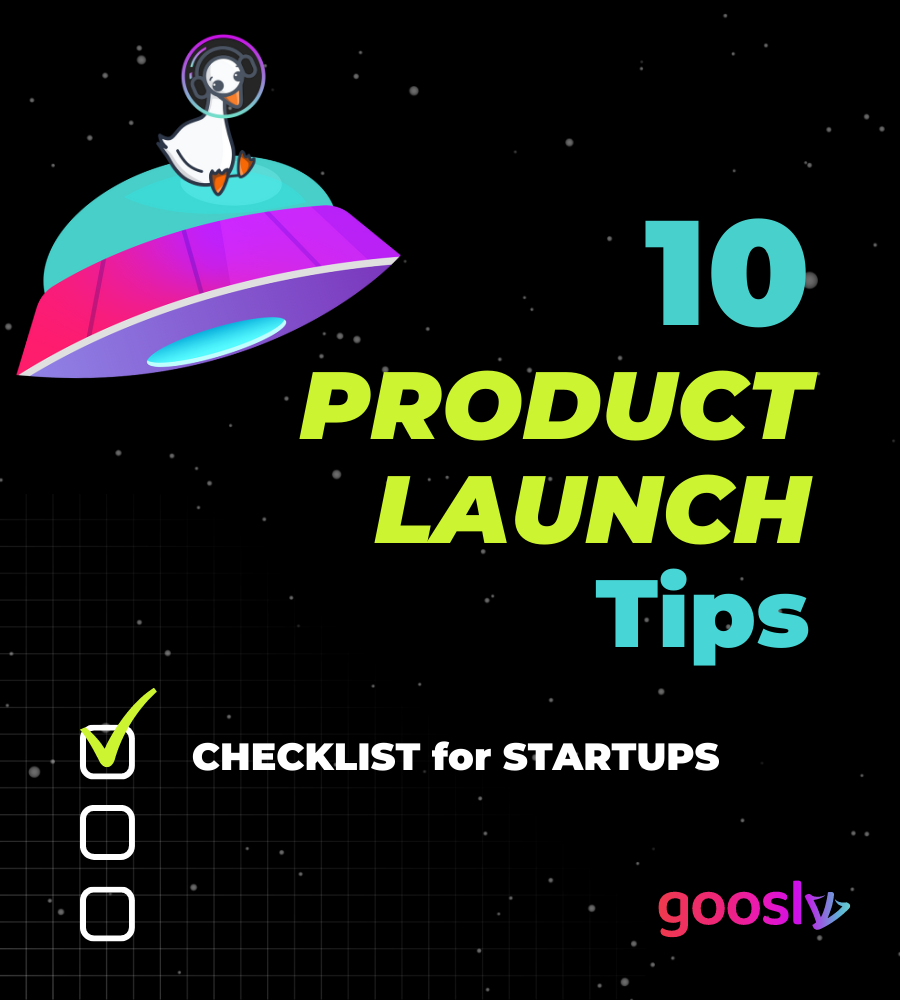What you'll get from this article:
- How to create a successful product launch strategy
- The importance of pre-launch marketing
- How to analyze the results of your product launches
Launching a new product is always a daunting task. You want to make sure that everything is perfect, but you also don't have the time or resources to do everything yourself. That's where Goosly's product launch checklist comes in! In this blog post, we will go over 1o tips for a successful product launch. By following these tips, you can minimize stress and maximize success!

1. Make a plan
Creating a plan for your startup is essential for success. Without a plan, you will be flying blind and making decisions on the fly, which is a recipe for disaster. Your plan should outline your goals, strategies, and tactics for achieving those goals. It should also include a timeline and budget to track your progress and stay on track.

2. Research your market
Researching your target market is another crucial step in successfully launching your product. You need to know who your target customers are, what needs they have that your product can fill, and what competition you will be up against. This information will help you to create a marketing strategy that resonates with your target audience.
3. Create a prototype
A prototype is essential for testing the feasibility of your product and getting feedback from potential users. By creating a prototype, you can understand how people will react to your product and make necessary changes before launch.
4. Build a landing page
A landing page is a great way to generate interest in your product and collect the email addresses of potential customers. Your landing page should describe your product in detail and explain the benefits of using it. It should also include a call to action button so visitors can sign up for more information or purchase the product.

5. Develop a marketing strategy
Your marketing campaigns should consist of both online and offline marketing tactics. Online marketing tactics include SEO, social media marketing, and paid advertising. Offline marketing tactics include print ads, direct mail, and TV commercials. It would be best if you chose the marketing tactics that will work best for your target audience and budget.
6. Set up tracking tools
To measure the success of your marketing efforts, you need to set up tracking tools like Google Analytics or Kissmetrics. These tools will help you to track website traffic, conversion rates, and other essential metrics related to your product launch.

7. Plan your launch date
When planning your launch date, it's important to consider a few factors. First, you'll need to ensure that your product is ready to be released to the public. You don't want to launch too early and have to go back and fix things or launch too late and miss out on potential customers.
Another thing to consider is your marketing strategy. When do you want to start promoting your product? Do you have any significant events that you can time your launch around? Planning ahead will help ensure that your launch goes as smoothly as possible.

The free online tool Goosly can help you quickly plan and share your product launch. With Goosly, you can create a roadmap to help track important deadlines across multiple work teams (like your sales team, development team, etc.). You can even publicize your launch plan roadmap to connect with potential customers and receive important feedback at initial stages.
8. Generate buzz on social media platforms
Generating buzz on social media platforms can be difficult, but it can be achievable with the right tactics. Some tips for generating buzz on social media platforms include:
Creating exciting and engaging content.
This is key for getting people to share your content and start talking about it.
Making use of hashtags.
Research and use relevant hashtags to help promote your content and reach a wider audience.
Targeting the right audience.
Ensure you are targeting the right audience with your content, or you could reach the wrong people.
9. Prepare for unexpected glitches during the launch process
There are always unexpected glitches during any launch process, so it is crucial to be prepared for them. If something goes wrong with the launch, you'll want a backup plan ready, so you can still get your product out there. Don't wait until the last minute to address potential problems; start addressing them as soon as possible, so you at least have a plan in place if they do happen.
Double-check everything before the launch to ensure there aren't any last-minute surprises. Ensure everyone who needs to know about the launch is kept up-to-date on what's happening, and be prepared for last-minute changes. No matter what happens, stay calm and positive; this will help keep everyone else calm and focused.
10. Analyze the results of your product launch campaign
When you launch a new product, tracking its performance in the market is important. This information can help you determine whether or not to continue investing in the development, make changes to the product, or even end the product altogether.

There are a few different ways to analyze the results of your product launch campaign:
1. Sales figures
This is probably the most obvious way to measure success, and it can be helpful to look at total sales, as well as sales by channel (online vs. offline) and/or region.
2. Customer feedback
Pay attention to what customers within your target audience say about your product – both good and bad. Use this feedback to improve your product and/or marketing strategy.
3. Competition
Keep an eye on what your competitors are doing, and see if you need to make any changes to stay ahead of the curve.
Now that you know how to create a successful launch, it's time to implement these tips. Goosly can help make the process more manageable and visualized for you, so check it out.

We wish you the best of luck with your upcoming product launch!

